bitisfan
New Member
I obtained my adult pair as adults in 2009. The female was born in 2003 and the male in 2005. I tried to breed them back in 2009-2010 but it got too cool and I didn't keep the male with the female long enough, I mistook follicle development as ovulation. Anyway, last summer (2011) I decided I would try again so in addition to a few extra meals, I purchased a photocell for my Helix thermostat - made a world of difference. I changed the high and low temps about four times over the course of the winter to situate cooling periods; fall, winter, and spring.
I put them together on the 31st of October and observed the first copulation event on the 4th of November. From there on I didn't see another obvious copulation event for the rest of the 'winter'. In the spring them seemed a good bit interested in each other (didn't see obvious copulation but suspect they did frequently during this warming period, 'late winter'). I kept the male in with her well past ovulation, which I did not observe. I removed the male when I saw she was about to shed (POS) and feed him graciously. I did not feed her during this whole time, for one she didn't seem interested (no typical woma glass striking). I set-up my egg chamber when we was still pre-shed. I did not record when this event occurred but it was about a month before egg disposition (29-May-2012).
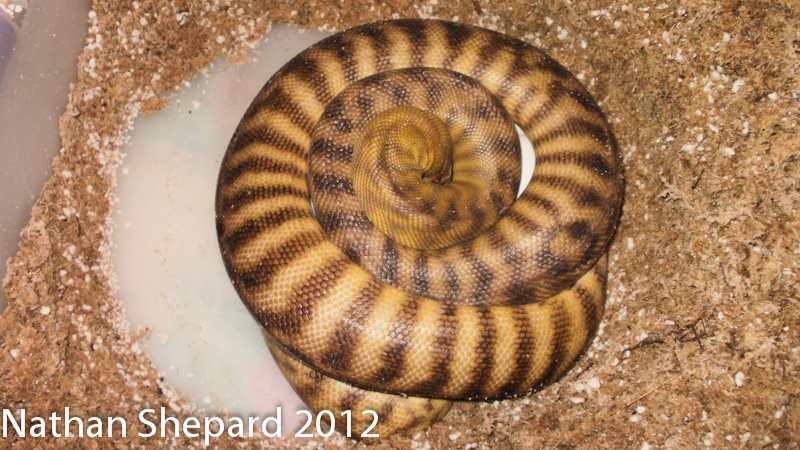
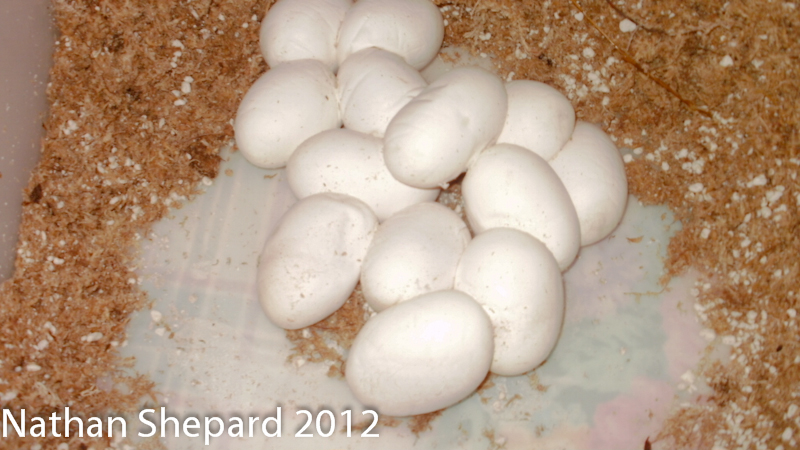
I was stoked! 13 eggs, I was only expected about 8! This brings me to my first question, what is the max this species has been recorded laying in captivity? All candled great, lots of viens. I incubated them at 89F on a mixture of 0.6 to 1 water to perlite ratio by weight. I suspended them above the perlite by using egg crate (called fluorescent light crate at Lowes). I left the incubation box when a slight tilt, so that any condensation drains down the lid and does not drip directly on the eggs - seemed to work well. At day 48 I got my first hatchling, the rest emerged on day 50 and 51. All 13 eggs hatched, the first hatchling didn't make it - seemed to have some issues (runt).
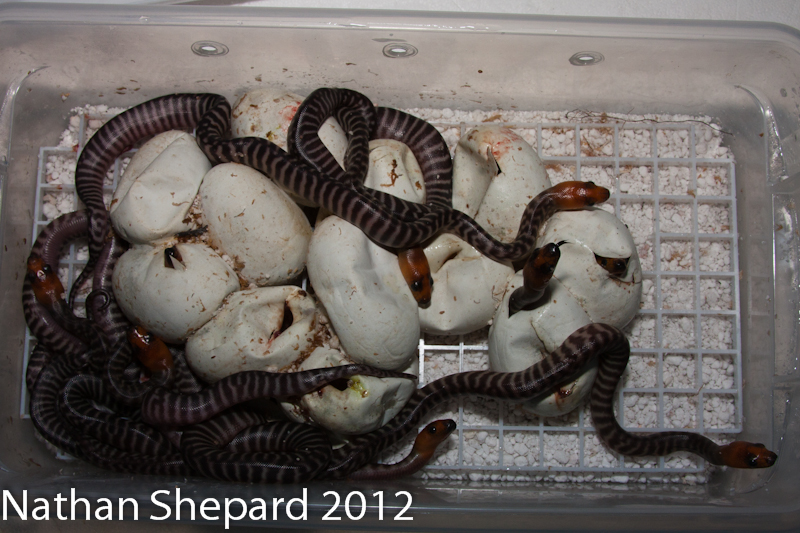
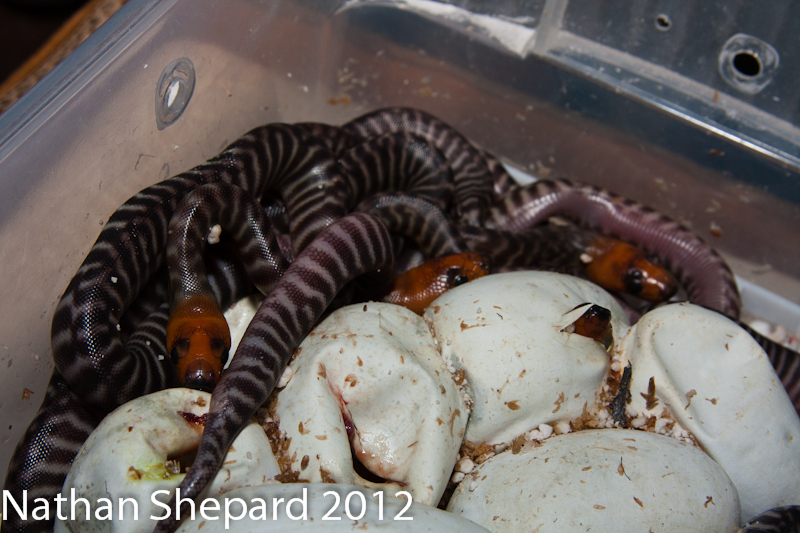
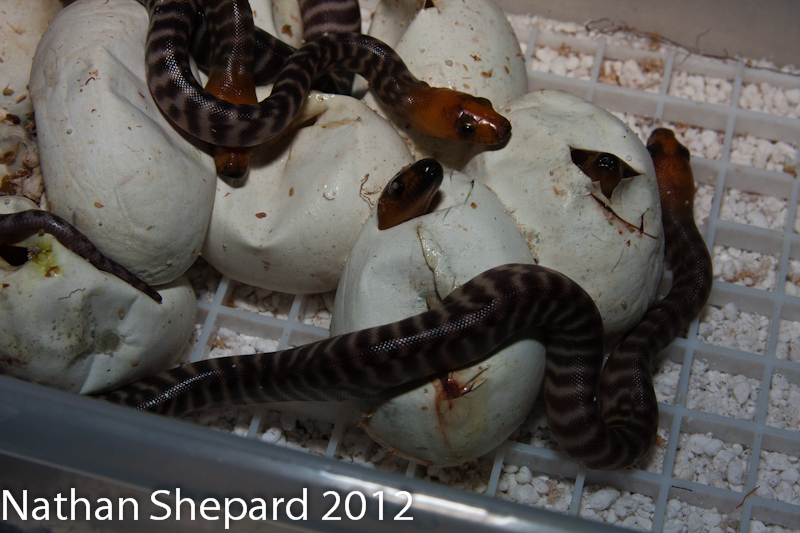
And a shot one with an egg tooth!
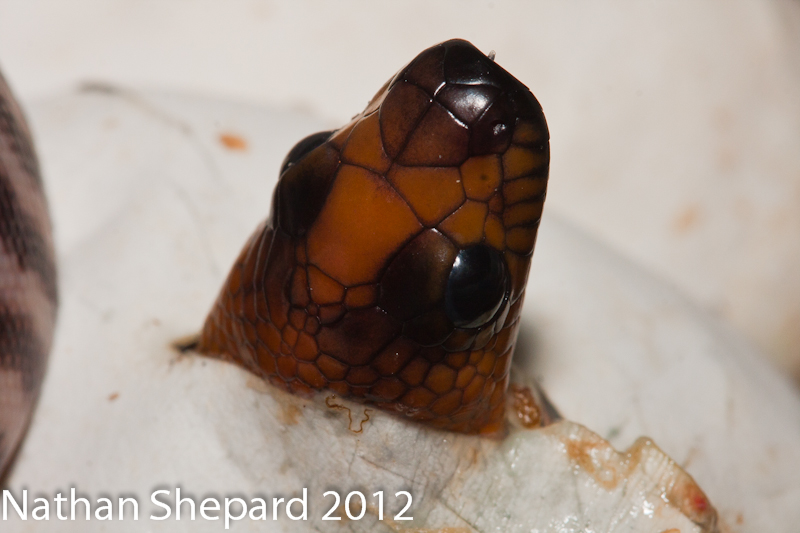
I was stoked, everything worked out well beyond how I thought it would! They all ate on the first try - frozen/thawed. They have eaten 4-5 times now and have grown a little. I recently sold four, but in the US they move slow....
Here is a photo of the female that produced this clutch (3 months postpartum):
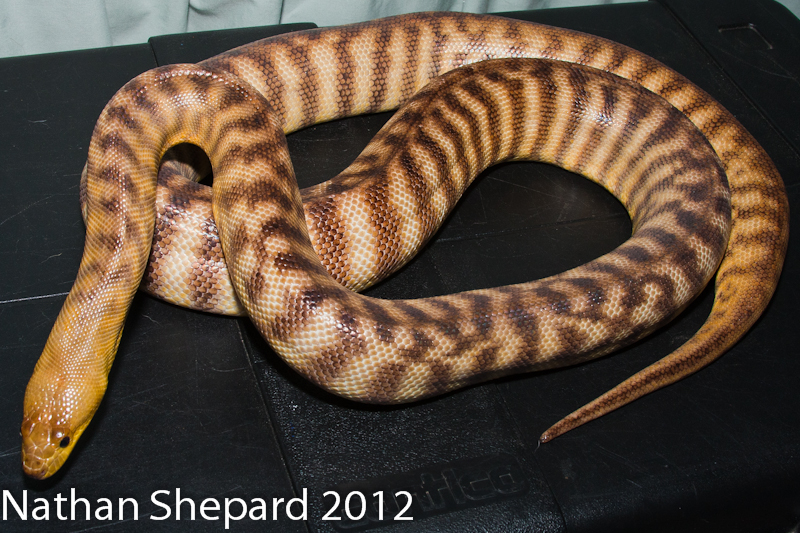
This bloodline seems to be one of the darker ones I've seen, but I am particularly fond due to how well the bands stay dark. The hatchlings have near perfect banding. If anyone knows / has thoughts on which bloodline I have feel free to tell me. I have my thoughts but I am not 100%.
Hope you enjoyed, thanks!
I put them together on the 31st of October and observed the first copulation event on the 4th of November. From there on I didn't see another obvious copulation event for the rest of the 'winter'. In the spring them seemed a good bit interested in each other (didn't see obvious copulation but suspect they did frequently during this warming period, 'late winter'). I kept the male in with her well past ovulation, which I did not observe. I removed the male when I saw she was about to shed (POS) and feed him graciously. I did not feed her during this whole time, for one she didn't seem interested (no typical woma glass striking). I set-up my egg chamber when we was still pre-shed. I did not record when this event occurred but it was about a month before egg disposition (29-May-2012).


I was stoked! 13 eggs, I was only expected about 8! This brings me to my first question, what is the max this species has been recorded laying in captivity? All candled great, lots of viens. I incubated them at 89F on a mixture of 0.6 to 1 water to perlite ratio by weight. I suspended them above the perlite by using egg crate (called fluorescent light crate at Lowes). I left the incubation box when a slight tilt, so that any condensation drains down the lid and does not drip directly on the eggs - seemed to work well. At day 48 I got my first hatchling, the rest emerged on day 50 and 51. All 13 eggs hatched, the first hatchling didn't make it - seemed to have some issues (runt).



And a shot one with an egg tooth!

I was stoked, everything worked out well beyond how I thought it would! They all ate on the first try - frozen/thawed. They have eaten 4-5 times now and have grown a little. I recently sold four, but in the US they move slow....
Here is a photo of the female that produced this clutch (3 months postpartum):

This bloodline seems to be one of the darker ones I've seen, but I am particularly fond due to how well the bands stay dark. The hatchlings have near perfect banding. If anyone knows / has thoughts on which bloodline I have feel free to tell me. I have my thoughts but I am not 100%.
Hope you enjoyed, thanks!
Last edited:



